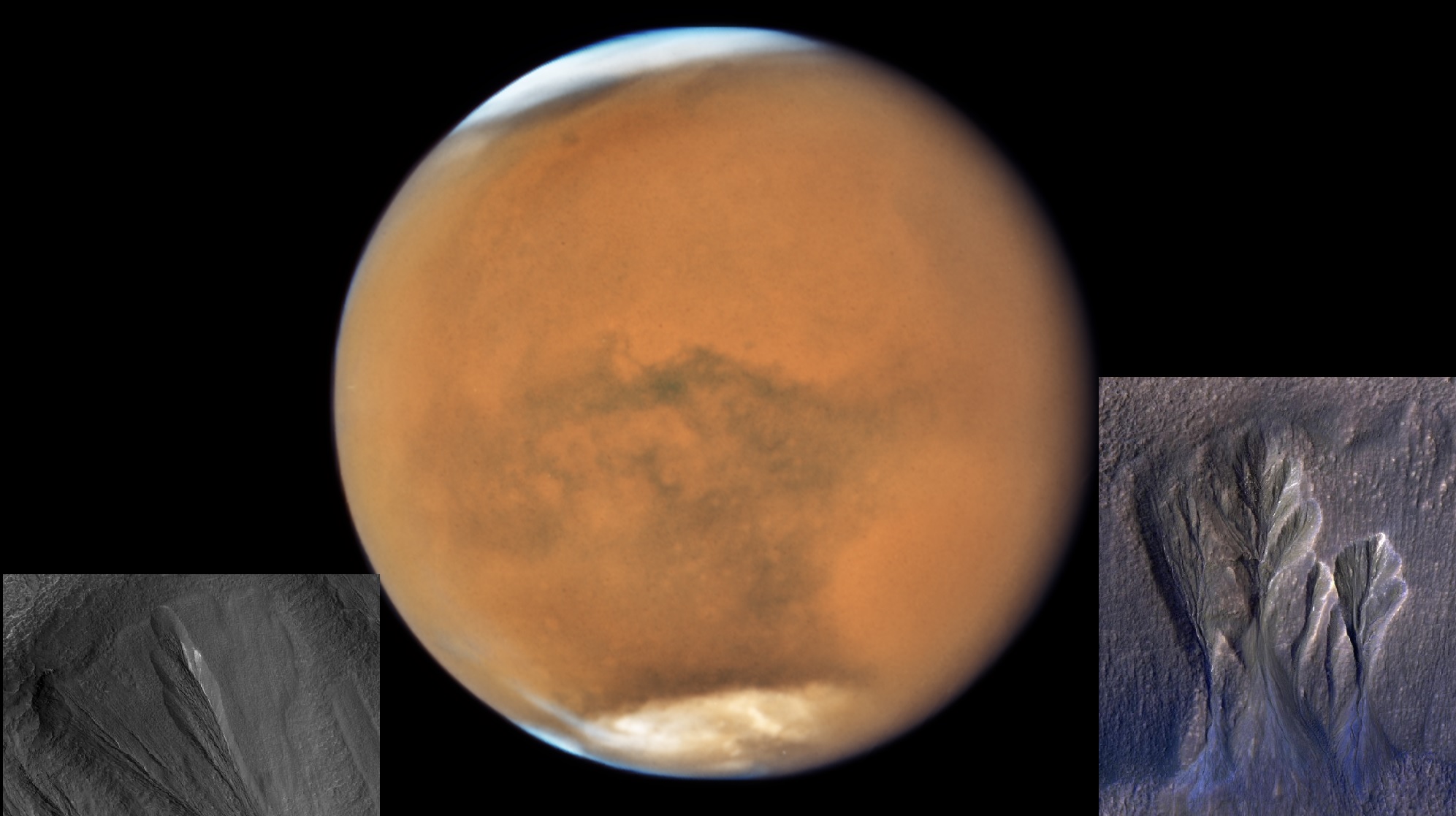Could Alien Life Hide Beneath Mars' Icy Surface? New Study Suggests It’s Possible

A fascinating new study hints at the possibility that Mars, the Red Planet long thought to be dry and inhospitable, might harbor conditions suitable for life beneath its icy surface. According to the research, photosynthesis—an essential process for life on Earth—could theoretically occur in specific areas of Mars, deep below layers of dusty ice in the planet's mid-latitudes. This revelation opens up new possibilities for future Mars missions and where scientists should focus their search for life.
Photosynthesis, the process that allows plants, algae, and some bacteria to produce energy by converting sunlight, requires two crucial ingredients: water and light. Earth’s plants use this process to create oxygen and sustain life. While Mars lacks many of the conditions found on Earth, the study proposes that the planet's icy regions might provide a shield from the harsh solar radiation that bombards its surface, while still allowing enough sunlight to penetrate for photosynthesis to happen beneath the ice. These potential "radiative habitable zones" could offer an environment where life, as we know it, might survive.
It's important to note that this study does not claim life exists on Mars today or ever did, but it does give scientists valuable clues about where to direct their search. “We are not stating we have found life on Mars,” said Aditya Khuller, the lead researcher from NASA's Jet Propulsion Laboratory, “but instead we believe that dusty Martian ice exposures in the mid-latitudes represent the most easily accessible places to search for Martian life today.”
Earth vs. Mars: A Tale of Two Planets
Both Earth and Mars sit within the so-called "habitable zone" of the solar system—the region around a star where temperatures are just right for liquid water to exist. However, while Earth is abundant with oceans, Mars appears dry and barren. Despite this, missions like NASA’s Curiosity and Perseverance rovers have found evidence that water once flowed on the Martian surface billions of years ago, as evidenced by the planet's ancient riverbeds and lake basins.
Mars lost its liquid water long ago, likely due to the collapse of its magnetic field, which left its atmosphere exposed to the sun's powerful solar winds. Without a thick atmosphere, Mars couldn’t hold onto its water, and most of it evaporated into space. The remaining water is mostly trapped in ice, especially at the poles. Additionally, the lack of an ozone layer on Mars means its surface is constantly bombarded by deadly ultraviolet radiation, which complicates the potential for life.
However, the new study suggests that beneath the surface of Mars' ice, liquid water could potentially form. The ice, particularly if it contains small amounts of dust, could melt from within, creating an environment where both water and sunlight coexist. In this scenario, sunlight penetrates the ice but is filtered enough to block harmful UV radiation, creating a potentially habitable environment.
The Potential for Life Beneath the Ice
Khuller's team used computer simulations to investigate how dusty ice on Mars behaves. The results showed that thin layers of dust within Martian ice can trap heat, causing the ice to melt just below the surface. This melting could create shallow liquid water reservoirs, protected from evaporation by the overlying ice. For photosynthesis to happen, both water and sunlight need to reach these depths. According to the simulations, in regions where the ice contains 0.01% to 0.1% dust, sunlight could penetrate between 5 to 38 centimeters, creating these "radiative habitable zones."
Interestingly, Earth provides some evidence to support this theory. On Earth, there are formations called "cryoconite holes" on glaciers where dust melts into the ice, allowing water to pool around it. Microorganisms have been found living in these environments, surviving by going dormant in the winter and reviving in the summer when sunlight creates liquid water beneath the surface. The Martian dusty ice layers could potentially offer a similar refuge for life, even if it’s in the form of microbial organisms.
What’s Next in the Search for Martian Life?
The study doesn’t confirm life on Mars, but it does offer a roadmap for future exploration. These radiative habitable zones may be the most promising places to search for signs of life on Mars. The next steps for the research team include refining their simulations and conducting laboratory experiments to recreate these dusty ice conditions.
Mars remains an enigmatic planet, but studies like this bring us closer to understanding whether life could have once existed—or may still exist—on this nearby world. With future missions planned to explore the Martian subsurface, the possibility of finding life beneath its icy crust becomes increasingly compelling.
The team's findings were published in the journal Nature Communications Earth & Environment on October 17, offering new hope in the continuing quest to answer one of humanity's biggest questions: Are we alone in the universe?


